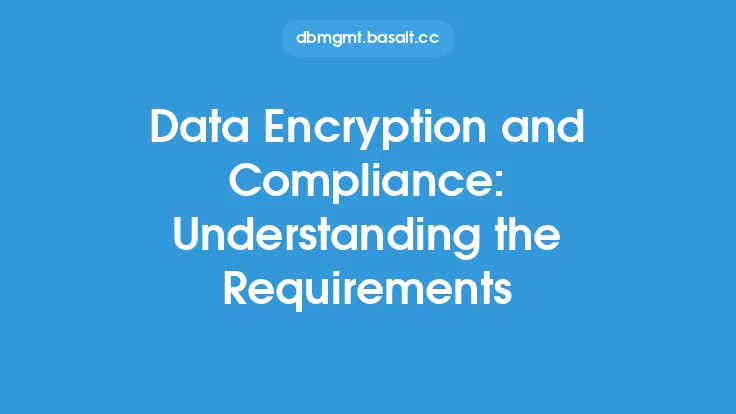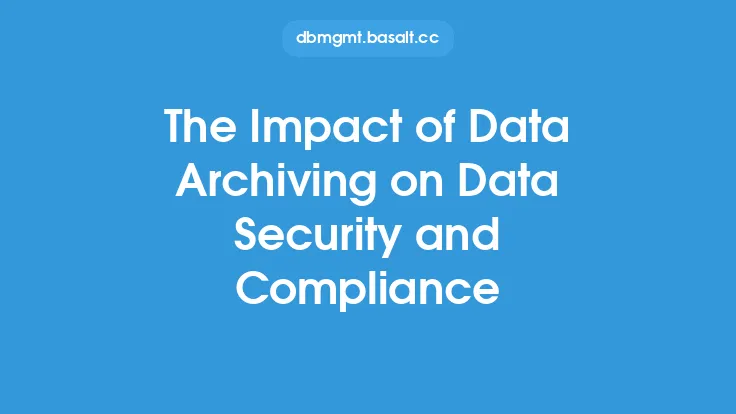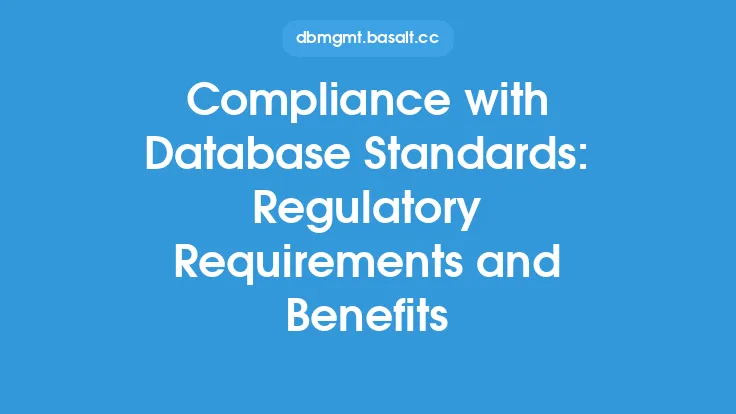Compliance and regulatory requirements are a crucial aspect of any organization's operations, and data modeling standards play a significant role in ensuring that these requirements are met. In today's data-driven world, organizations must navigate a complex landscape of regulations and standards that govern the collection, storage, and use of data. Data modeling standards provide a framework for ensuring that data is managed and governed in a way that meets these regulatory requirements, reducing the risk of non-compliance and associated penalties.
Introduction to Data Modeling Standards
Data modeling standards are a set of rules and guidelines that define how data is structured, organized, and related. These standards provide a common language and framework for data management, ensuring that data is consistent, accurate, and reliable. Data modeling standards are essential for ensuring that data is properly governed, and that regulatory requirements are met. By establishing a standardized approach to data management, organizations can reduce the risk of data errors, inconsistencies, and non-compliance.
Regulatory Requirements and Data Modeling Standards
Regulatory requirements for data management vary by industry and jurisdiction, but most require organizations to implement robust data governance and management practices. For example, the General Data Protection Regulation (GDPR) in the European Union requires organizations to implement measures to ensure the confidentiality, integrity, and availability of personal data. Similarly, the Health Insurance Portability and Accountability Act (HIPAA) in the United States requires organizations to implement standards for the protection of sensitive patient data. Data modeling standards play a critical role in ensuring that these regulatory requirements are met, by providing a framework for data governance and management.
Data Modeling Standards for Compliance
Data modeling standards for compliance are designed to ensure that data is managed and governed in a way that meets regulatory requirements. These standards typically include guidelines for data classification, data quality, data security, and data retention. For example, the Data Governance Institute's (DGI) Data Governance Framework provides a set of standards and guidelines for data governance, including data modeling, data quality, and data security. Similarly, the International Organization for Standardization (ISO) provides a range of standards for data management, including ISO 19770-1, which provides guidelines for IT asset management.
Technical Requirements for Data Modeling Standards
From a technical perspective, data modeling standards require a range of tools and technologies to support data governance and management. These include data modeling tools, such as entity-relationship diagrams (ERDs) and data flow diagrams (DFDs), as well as data governance platforms and data quality tools. Data modeling standards also require a range of technical skills, including data modeling, data architecture, and data engineering. For example, data modeling tools such as Enterprise Architect and PowerDesigner provide a range of features and functions for data modeling, including data modeling, data simulation, and data analysis.
Implementation of Data Modeling Standards
Implementing data modeling standards requires a range of steps, including data discovery, data classification, data quality assessment, and data governance. Data discovery involves identifying and cataloging data assets, while data classification involves categorizing data based on its sensitivity and importance. Data quality assessment involves evaluating the accuracy, completeness, and consistency of data, while data governance involves implementing policies and procedures for data management. For example, the Data Management Body of Knowledge (DMBOK) provides a framework for data management, including data governance, data quality, and data security.
Best Practices for Data Modeling Standards
Best practices for data modeling standards include establishing a data governance framework, implementing data quality controls, and providing training and awareness programs for data stakeholders. A data governance framework provides a set of policies and procedures for data management, while data quality controls ensure that data is accurate, complete, and consistent. Training and awareness programs ensure that data stakeholders understand their roles and responsibilities in data management. For example, the Data Governance Institute's (DGI) Data Governance Framework provides a set of best practices for data governance, including data modeling, data quality, and data security.
Conclusion
In conclusion, data modeling standards play a critical role in ensuring that organizations meet compliance and regulatory requirements for data management. By establishing a standardized approach to data management, organizations can reduce the risk of non-compliance and associated penalties. Data modeling standards provide a framework for data governance and management, ensuring that data is properly governed and that regulatory requirements are met. By implementing data modeling standards, organizations can ensure that their data is accurate, complete, and consistent, and that they are able to meet the evolving regulatory requirements for data management.





